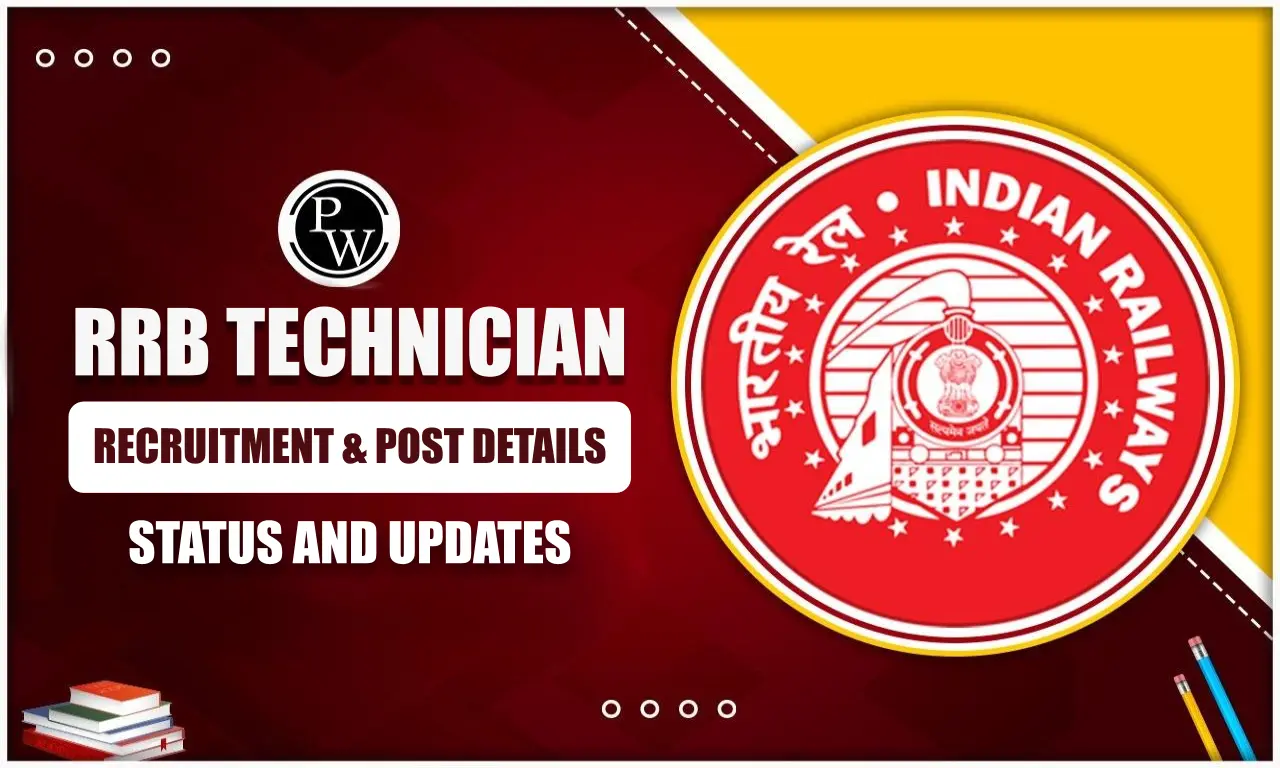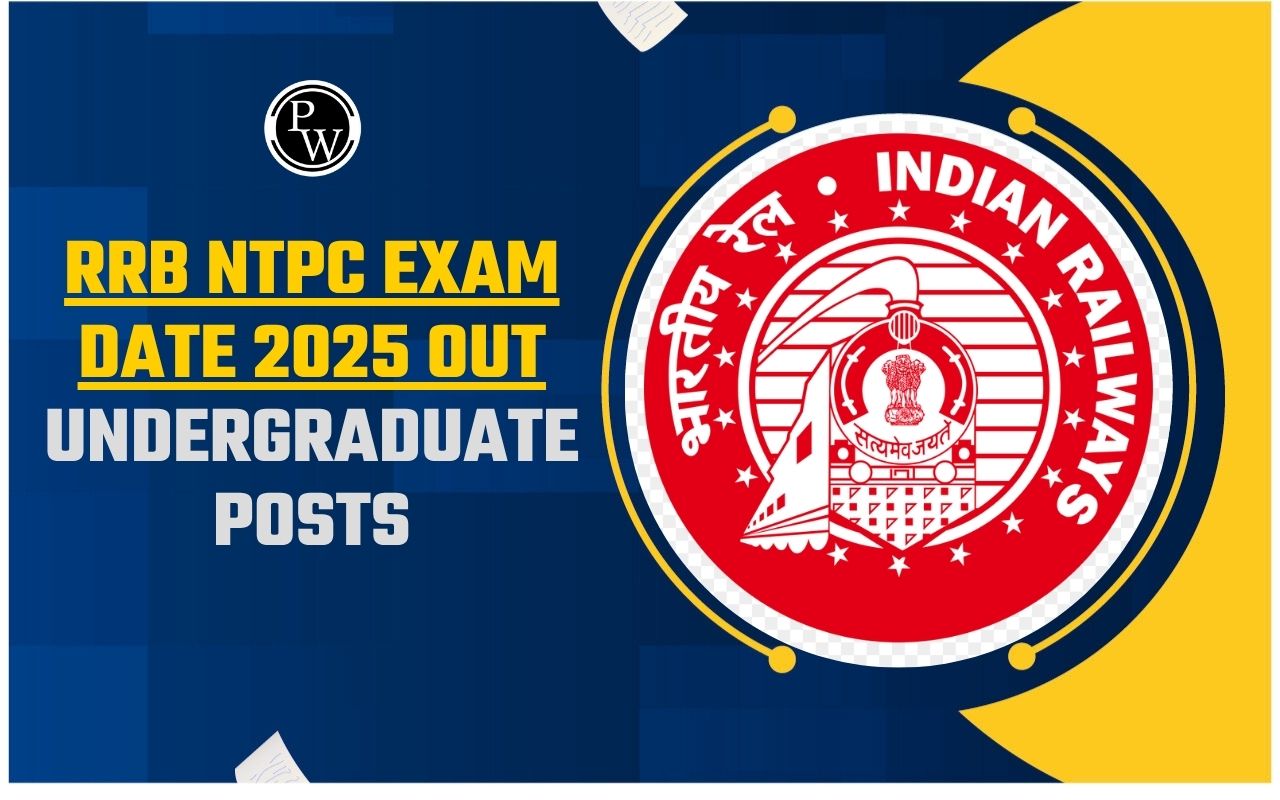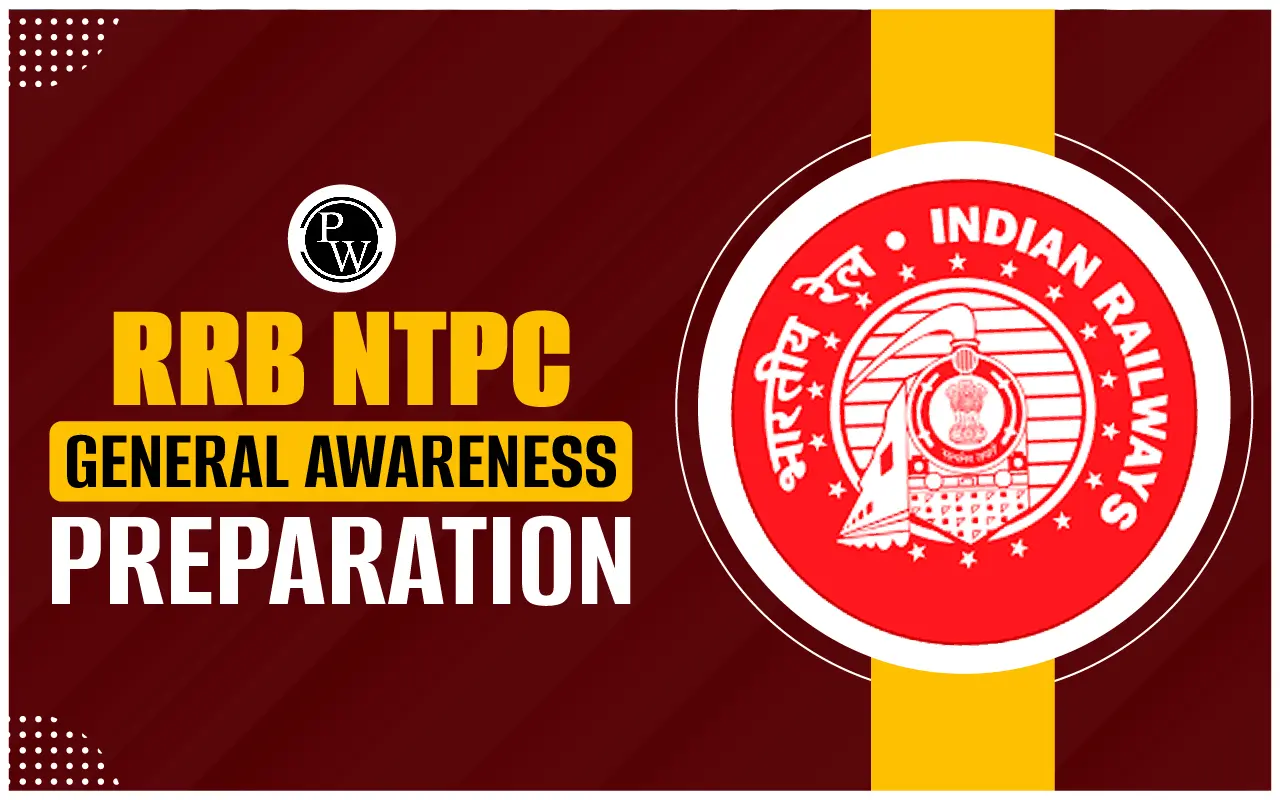Comparing the Railway Budget 2024 with 2023:
The Railway Budget is an important component of India's Union Budget, reflecting the government's plans and priorities for the Indian Railways. It outlines the allocation of funds, new initiatives, and strategies to improve the railway network's efficiency, safety, and passenger services. Comparing the Railway Budget 2024 with the Railway Budget 2023 highlights the government's evolving focus and priorities for this vital sector.
Railway Budget 2024
In the Railway Budget 2024, the government's approach shifted slightly, with less emphasis on new train services and more focus on infrastructure development, particularly in specific regions like Bihar and Andhra Pradesh.
[caption id="" align="aligncenter" width="592"]
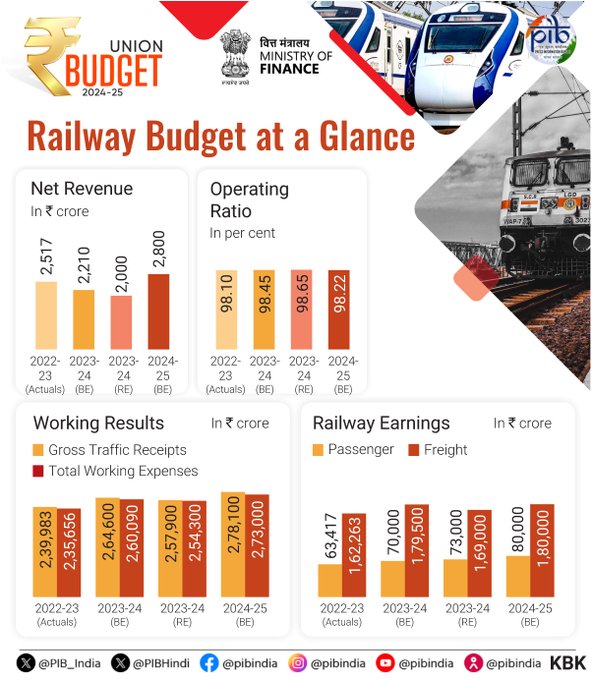
Source: PIB[/caption]
Key Highlights of Railway Budget 2024
-
Capital Expenditure
: The budget allocated Rs 2,52,200 crore for capital expenditure, maintaining the previous year's focus on infrastructure development. An additional Rs 10,000 crore was sourced from extra-budgetary resources.
-
No New Train Announcements
: Unlike the previous year, the budget did not introduce any new trains or significant modernization plans for the existing fleet.
-
Regional Focus
: The budget emphasized infrastructure development in Bihar and Andhra Pradesh, with specific projects aimed at boosting industrial growth in these regions.
-
Safety Measures
: Despite recent train accidents, the budget did not include new announcements for safety enhancements like the KAVACH system.
-
Economic Corridors
: The development of three major railway economic corridors was announced, focusing on energy, mineral, cement transportation, port connectivity, and high traffic density areas.
Railway Budget 2023
In the Railway Budget 2023, Finance Minister Nirmala Sitharaman emphasized the modernization and expansion of the Indian Railways. Key highlights included significant investments in infrastructure, the introduction of new trains, and initiatives to enhance passenger safety and convenience.
[caption id="" align="aligncenter" width="1421"]
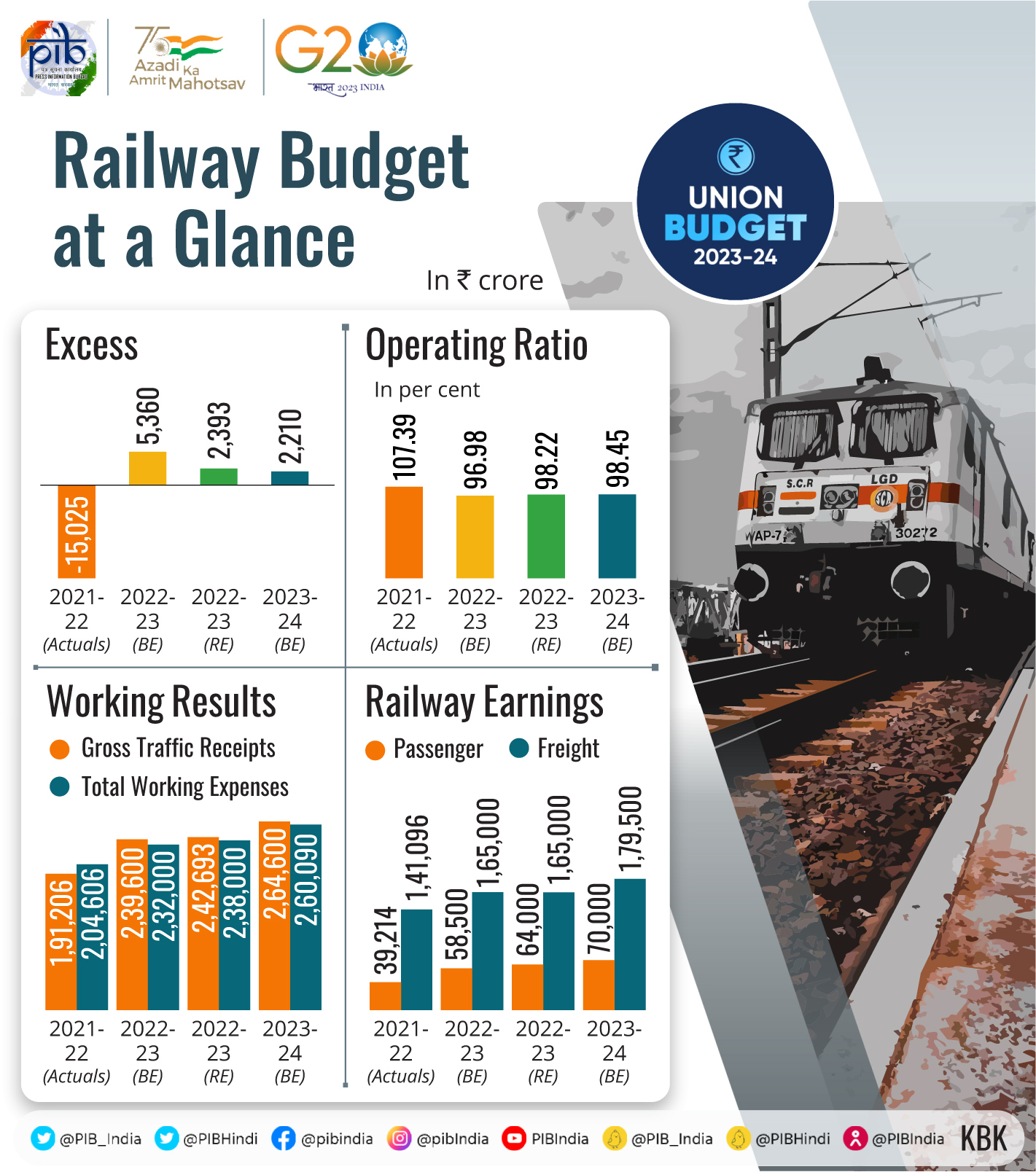
Source: PIB[/caption]
Key Highlights of Railway Budget 2023
-
Capital Expenditure
: The budget allocated a record Rs 2,40,000 crore for capital expenditure in the railway sector, focusing on expanding and modernizing the railway infrastructure.
-
New Trains
: The introduction of new Vande Bharat Express train services was major highlight. These trains aimed to offer faster and more comfortable travel options for passengers.
-
Safety Measures
: The implementation of advanced safety systems like KAVACH was prioritized to prevent accidents and enhance passenger safety.
-
Station Redevelopment
: Significant funds were allocated for the redevelopment of major railway stations, transforming them into modern, passenger-friendly hubs.
-
Freight Corridors
: The budget continued to support the development of dedicated freight corridors to boost the efficiency of goods transportation.
Railway Budget 2024 vs 2023 Detailed Comparison
Railway Budget 2024 vs 2023 Detailed Comparison for candidates reference is provided below:
|
Comparing the Railway Budget 2024 with 2023
|
|
Aspect
|
Railway Budget 2024
|
Railway Budget 2023
|
|
Capital Expenditure
|
The capital expenditure in 2024 saw a slight increase to Rs 2,52,200 crore, with an additional Rs 10,000 crore from extra-budgetary resources. The focus remained on infrastructure development, but with a specific emphasis on regions like Bihar and Andhra Pradesh.
|
The capital expenditure for 2023 was Rs 2,40,000, focusing on modernizing and expanding the railway infrastructure. This included new tracks, upgraded signaling systems, and improved station facilities.
|
|
New Train Services
|
2024 budget did not announce any new train services. This shift indicated a focus on consolidating and optimizing the existing network rather than expanding it with new trains.
|
The 2023 budget introduced new Vande Bharat Express trains for more comfortable travel options for passengers. This train were part of the broader effort to modernize the railway fleet and enhance passenger experience.
|
|
Passenger Safety
|
Despite the occurrence of multiple train accidents in the past year, the 2024 budget did not include new safety measures. This omission was a notable deviation from the previous year's emphasis on enhancing passenger safety.
|
Passenger safety was a significant focus in the 2023 budget, with the introduction of advanced safety systems like KAVACH. These systems were designed to prevent accidents and enhance overall safety standards across the railway network.
|
|
Regional Development
|
The 2024 budget, however, placed a strong emphasis on infrastructure development in Bihar and Andhra Pradesh. Projects in these regions aimed to boost industrial growth, with specific mentions of railways as part of the broader infrastructure plans.
|
The 2023 budget aimed at overall network improvement, without a particular focus on any specific regions. The investment was distributed across various projects to ensure balanced development.
|
|
Economic Corridors
|
The 2024 budget announced the development of three major railway economic corridors. These included:
-
An energy, mineral, and cement corridor.
-
A port connectivity corridor.
-
A high traffic density corridor.
These corridors are expected to streamline freight movement, enhance connectivity, and support economic activities in their respective areas.
|
While the 2023 budget continued support for dedicated freight corridors, it did not specifically outline new economic corridors.
|
|
Market Reaction
|
2024 budget saw a decline in railway stock prices, ranging from 1-5 percent. The lack of new train announcements and safety measures contributed to this market reaction.
|
Following the 2023 budget, railway stocks experienced positive growth. The introduction of new trains and modernization plans contributed to this optimistic outlook.
|
|
Technological Advancements
|
While the 2024 budget maintained a focus on infrastructure development, it did not specifically highlight new technological advancements or digital initiatives for the railways.
|
The 2023 budget emphasized the adoption of advanced technologies for train operations, ticketing, and passenger services. Digitalization and automation were key themes aimed at improving efficiency and service quality.
|
Trends and Patterns in Railway Funding
The capital expenditure on the Railways has increased by 77% over the past five years. Significant investments were made in various areas such as the construction of new lines, gauge conversion, and doubling. Key focus areas included fast capacity augmentation, modernization of rolling stock, energy efficiency, and more.
Allocation to Various Areas of the Railways Sector
Allocation to Various Areas of the Railways Sector are provided in table below. The values are in crore.
|
Allocation to Various Areas of the Railways Sector
|
|
Area
|
Budget Estimates (2023-24)
|
Budget Estimates (2024-25)
|
|
New Lines
|
31,850
|
34,603
|
|
Gauge Conversion
|
4,600
|
4,720
|
|
Doubling
|
30,749
|
29,312
|
|
Rolling Stock
|
37,581
|
40,314
|
|
Track Renewals
|
17,297
|
17,652
|
|
Signaling and Telecom
|
4,198
|
4,647
|
|
Electrification Projects
|
8,070
|
6,742
|
|
Customer Amenities
|
13,355
|
15,511
|
Successes and Shortcomings of Past Budgets
The comparison between the Railway Budgets reveals a shift in focus and priorities. The 2023 budget emphasized modernization, new train services, and passenger safety, aiming for a comprehensive improvement in the railway network. The 2024 budget, while maintaining a high level of capital expenditure, focused more on regional infrastructure development, particularly in Bihar and Andhra Pradesh, and announced the creation of new economic corridors.
The lack of new train announcements and specific safety measures in 2024 marked a departure from the previous year's approach.
Lessons Learned and Future Expectations
Understanding these differences helps in assessing the government's strategic direction for the Indian Railways and its impact on stakeholders, including passengers, industry players, and investors. As the Indian Railways continues to evolve, balancing infrastructure development, technological advancement, and passenger safety will be crucial for its long-term success and sustainability.
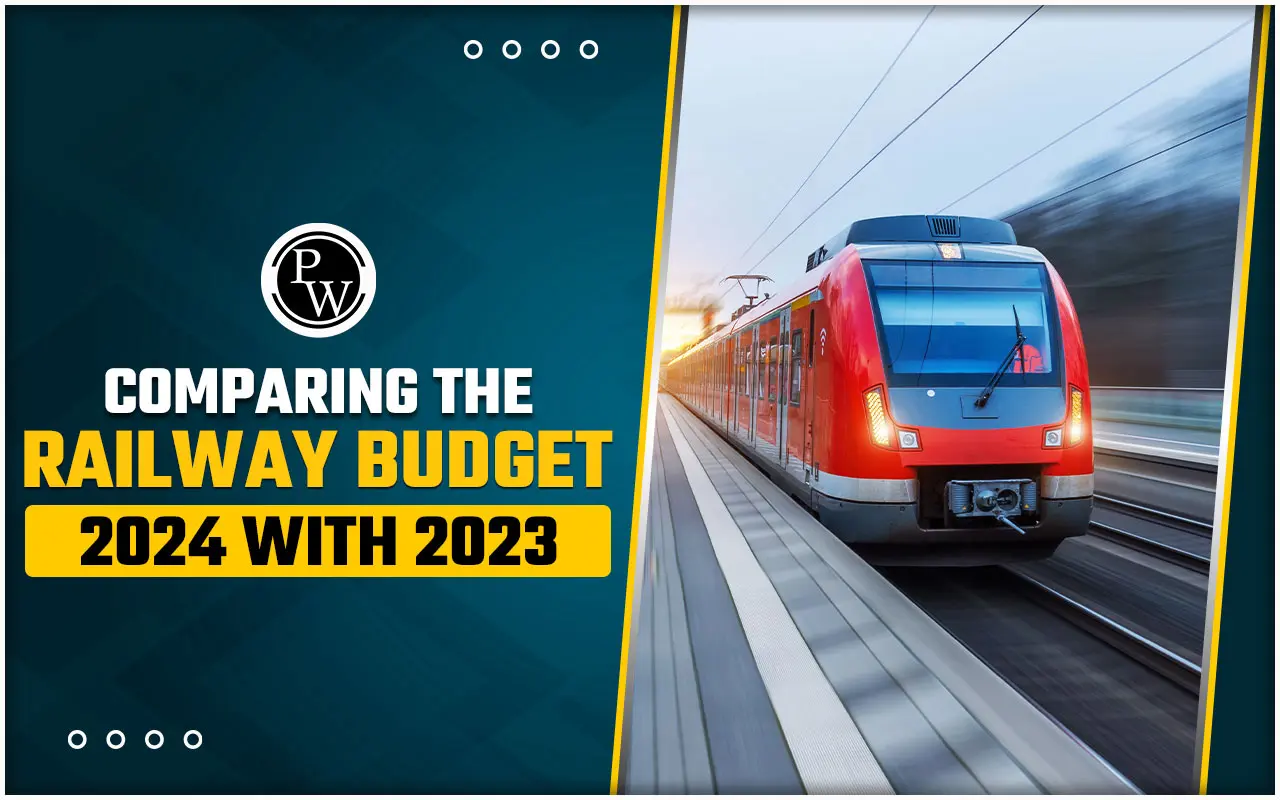
 Source: PIB[/caption]
Source: PIB[/caption]
 Source: PIB[/caption]
Source: PIB[/caption]




